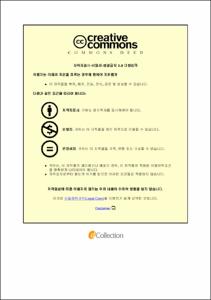금속절삭산업에서 스마트공구시스템 적용에 따른 관리 효율성 향상 및 생산원가 절감
- Abstract
- 자동차, 중공업, 금형, 항공우주, 풍력, 방위, 발전과 같이 우리 일상에서 쉽게 접할 수 있는 광범위한 산업에서 금속 부품은 필수적이며 이는 금속 절삭 가공을 거쳐서 정밀한 형태로 조립된다. 다시 말하면, 각종 산업용 부품과 제품을 만들기 위해서는 직접가공(절단, 절삭, 연마, 천공 등)하거나 그 모양을 만들어 주는 금형(단조, 압출, 인발, 사출을 위한 금형)을 기계적으로 깎을 때 절삭공구에 의존하게 되며 그 가공 정밀도는 물론 원가절감, 품질, 생산성, 안정성 등도 사용되는 절삭공구의 성능에 크게 좌우된다(박극우, 2010). 절삭가공(Metal Cutting)이란 상대적으로 경도가 높은 절삭 공구(Cutting Tool)를 이용하여 피가공물(Workpiece)의 불필요한 부분을 얇은 두께의 칩(Chip)의 형태로 제거함으로써 공작물을 원하는 형태로 만드는 작업을 의미한다(전형득, 2014). 절삭 가공을 주업으로 하는 소비자의 경우 가공물의 생산량, 가공물의 형상 및 재질에 따라 공구 소모량이 천차만별이며 통상적으로 생산원가의 10% 내외를 차지한다. 이렇게 수요자의 측면에서는 생산현장에서 가장 쉽게 눈에 띄며 소모가 잦은 절삭공구는 항상 그 기업의 생산원가 절감의 목표가 된다. 또한 절삭공구 불출 및 관리를 위해 공구 담당자를 배치해야하는 것도 인건비 지출에 의한 생산원가 상승의 원인이 된다. 공급자의 측면에서는 대표적인 제품-서비스 통합시스템인 스마트공구시스템 임대 판매를 통해 고객의 생산 라인을 개선할 수 있는 기회가 생기며 이때 경쟁사 제품 전환을 통해 자사 제품 판매 확대를 기대할 수 있다. 따라서 본 프로젝트는 금속절삭산업에서 스마트공구시스템 적용에 따른 수요자의 공구 관리 효율성 향상 및 생산원가 절감과 공급자의 매출 증대 및 점유율 확대에 미치는 영향을 실증사례 분석을 통해 알아보고자 한다.
Metal components are indispensable parts in mechanical products across industries such as metal cutting, shipbuilding, automotive, aerospace and defense. They are precisely fabricated through machining processes, followed by their assembly processes for making final products. Thus, a machining process, which removes unnecessary workpiece volume for making a designed part through contacting of the workpiece with a cutting tool on a lathe or machining center, is the foundation of fabricating such metal components. Cutting tools are essentially required for machining processes and treated as consumables, thereby relating to production cost. Reportedly, end-users consume cutting tools, generally accounting for approximately 10% in the total production cost, and deal with them as priority consumables in production cost calculation. Hence, it is critical to reduce the consumption of cutting tools through efficient cutting tool management technologies. The present work proposes a business model that can reduce cost due to the use of cutting tools through the rental application of a smart tool system, which integrates conventional tool cabinets and Information and Communication Technology. For such purpose, this report includes: the identification of the smart tool system and its relevant business model, the analysis of successful cases in the perspective of end-users and suppliers, and the validation of expected cost gains by empirical case studies.
- Issued Date
- 2018
- Awarded Date
- 2018. 8
- Type
- Dissertation
- Keyword
- cutting tool smart tool system management efficiency cost reduction 절삭 원가절감 스마트공구시스템 제품 서비스 통합시스템
- Publisher
- 부경대학교
- Affiliation
- 부경대학교 기술경영전문대학원
- Department
- 기술경영전문대학원 기술경영학과
- Advisor
- 신승준
- Table Of Contents
- Ⅰ. 서 론 1
1. 프로젝트의 배경과 목적 1
2. 프로젝트의 방법과 구성 2
Ⅱ. 금속절삭산업의 이해 및 동향 3
1. 금속절삭산업의 이해 3
1.1 산업적 특성 3
1.2 경제적 특성 4
2. 금속절삭산업의 동향 5
Ⅲ. 금속절삭산업의 비즈니스 모델 7
1. 제품-서비스 통합시스템 등장 7
2. 금속절삭산업에서의 적용 9
3. 스마트공구시스템 임대 판매 13
Ⅳ. 공구시스템의 이해 및 기대효과 15
1. 공구시스템의 이해 15
1.1 전통적 공구시스템 15
1.2 스마트공구시스템 16
1.3 전통적 공구시스템과 스마트공구시스템 비교 19
2. 스마트공구시스템 제품 로드맵 20
3. 스마트공구시스템의 기대효과 24
3.1 수요자 측면 24
3.2 공급자 측면 26
Ⅴ. 프로젝트 방법 27
1. 실증데이터 수집 27
2. 데이터 특성 28
Ⅵ. 프로젝트 사례 분석 및 결과 29
1. 자동차 부품 가공 업체 S사 29
1.1 회사 소개 및 현황 29
1.2 정량적 효과 30
1.3 정성적 효과 32
2. 자동차 부품 가공 업체 W사 33
2.1 회사 소개 및 현황 33
2.2 정량적 효과 34
2.3 정성적 효과 36
3. 자동차 부품 가공 업체 K사 37
3.1 회사 소개 및 현황 37
3.2 정량적 효과 38
3.3 정성적 효과 40
Ⅶ. 결론 41
1. 프로젝트 결과의 요약 41
2. 프로젝트의 시사점 42
3. 프로젝트의 한계점 및 향후 연구의 방향 43
참고 문헌 44
1. 국내 문헌 44
2. 해외 문헌 45
- Degree
- Master
- Files in This Item:
-
-
Download
 금속절삭산업에서 스마트공구시스템 적용에 따른 관리 효율성 향상 및 생산원가 절감.pdf
기타 데이터 / 1.41 MB / Adobe PDF
금속절삭산업에서 스마트공구시스템 적용에 따른 관리 효율성 향상 및 생산원가 절감.pdf
기타 데이터 / 1.41 MB / Adobe PDF
-
Items in Repository are protected by copyright, with all rights reserved, unless otherwise indicated.